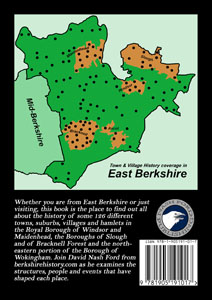 |
 |
||||||||
|
|
White Waltham Historian's Home
The church at White Waltham (historically sometimes Blanche Waltham) was originally an Anglo-Saxon minster, tending to the needs of people for many miles around. The site may have been chosen due to its proximity to the old Roman temple on Weycock Hill, in adjoining Waltham St Lawrence, which could have had a Dark Age Christian successor. By the time the Anglo-Saxons arrived, the old Roman temple complex was in ruins, and they saw it as a Dilapidated Home or Wealt-Ham: hence Waltham. White Waltham, Shottesbrooke and Waltham St Lawrence were originally all one estate under this name. The principal manor in the parish, called Berry, was centred on Bury Court Farm, opposite the church. This was owned by Chertsey Abbey but rented out to tenants. The village was therefore sometimes known as Waltham Abbots, but the name based on the local white chalk eventually triumphed. Very close to Bury Court Farm, on the south side of the church, stands the 18th century Waltham Place (formerly Hill House). This is the manor house of the manor called Walthamsland, or sometimes Windsors. The famous Berkshire historian, Thomas Hearne, was born at Littlefield Green, just to the south of White Waltham village, in 1678. With the help of Squire Cherry, he gained an excellent education and became assistant keeper of the Bodleian Library at Oxford University. He is best known for his editing of
In one of his works, Hearne tells an amusing story concerning the Vicar of White Waltham, one John Blower. Queen Elizabeth I had travelled over from Windsor to hear him preach, an event which the poor man most certainly did not relish. The nervous Blower addressed the lady first as “My Royal Queen” but, later, this became “My Noble Queen,” at which point the monarch was heard to observe loudly, “What! Am I ten groats worse than I was?” It is said that the vicar never preached a sermon again. The church stands on a very ancient site. The present building is mostly Victorian but retains a 14th century chequerboard transept with some interesting old graffiti. Monuments inside include those to Hearne and also to Sir Constantine Phipps (died 1723), the Lord Chancellor of Ireland who lived at Heywood Lodge with his wife’s family. Just outside the churchyard are the 17th century parish stocks and whipping post. Read more history of
White Waltham and other settlements in the parish in David Nash Ford's book, 'East Berkshire Town and
Village Histories'.
|
||||||||
| © Nash Ford Publishing 2002; Revised 2020. All Rights Reserved. | |||||||||





